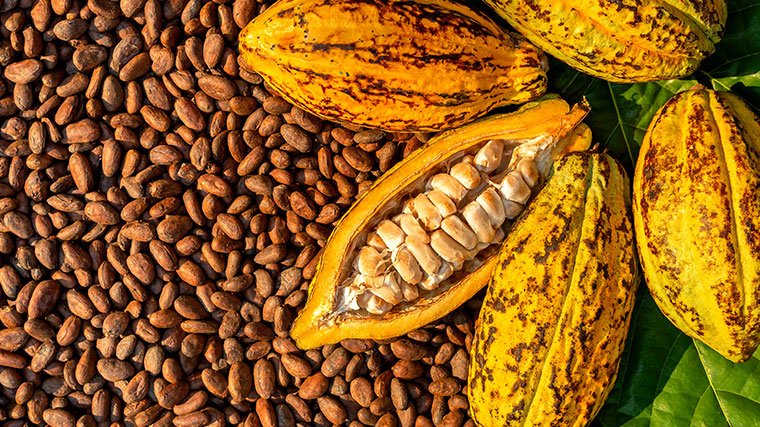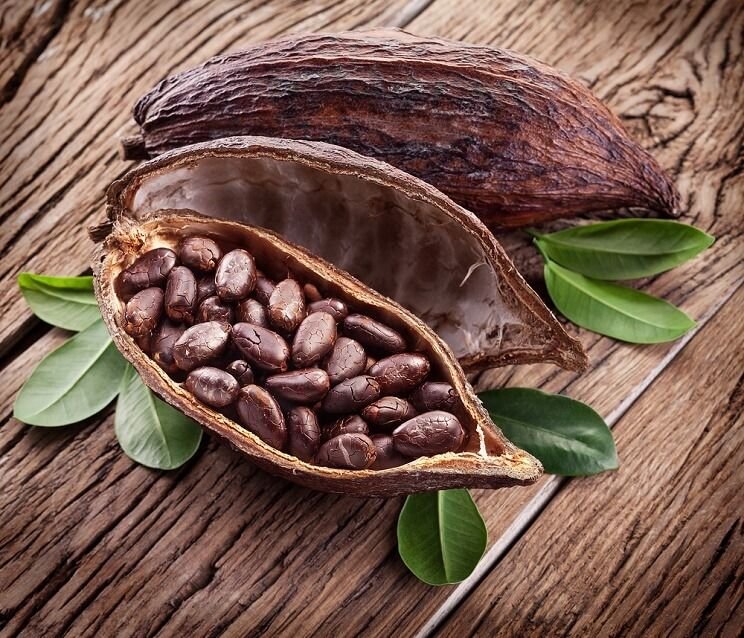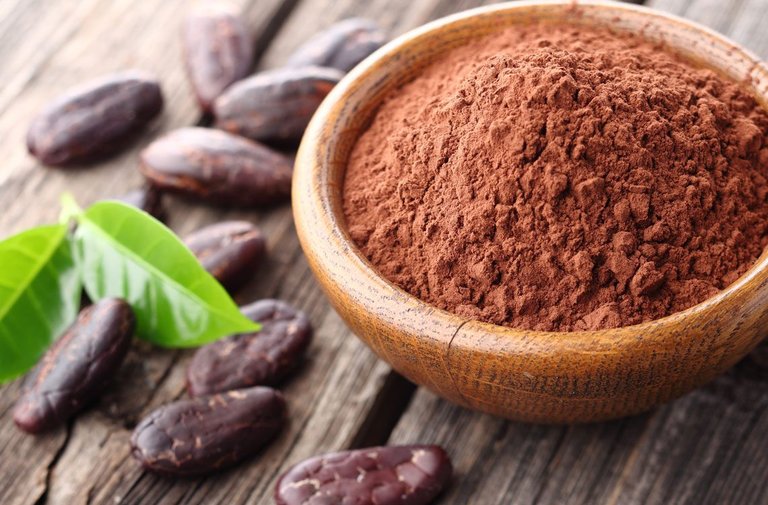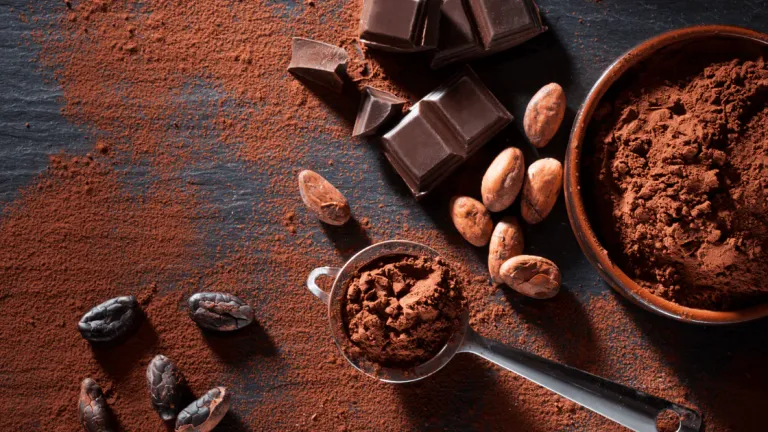The Incredible Benefits of Cacao

What is cacao?
Cacao is made from the seeds (or beans) of the fruit pods from the Theobroma cacao tree. These may be ground to a raw, unprocessed powder, which is what many of us know as cocoa powder. Alternatively, the husks of the beans are removed and the remaining beans are chopped to form intensely flavoured pieces or ‘nibs’ that can be added to baking or sprinkled on to breakfast bowls.
The health benefits of cacao are many. Cacao is rich in B vitamins and minerals such as calcium, copper, magnesium, phosphorus, potassium, copper, and zinc. It also contains powerful antioxidants that protect the body’s cells from oxidative stress. Cacao is a great source of polyphenols, especially flavanols, a subgroup of flavonoids.

Here are some of the benefits of cacao:
- Thanks to flavonoids, pure cocoa powder can lower blood pressure
Cocoa flavanols improve blood flow in the skin, increasing hydration and protecting it from UV rays - Cacao thins the blood, improves circulation, and can reduce the risk of strokes and heart attacks
- Cacao may lower cholesterol levels bad LDL
- Thanks to its polyphenol content, it improves blood flow to the brain and cognitive functions
- It could reduce the risk of neurodegenerative diseases like Alzheimers
- Cacao can improve mood and symptoms of depression because it contains chemical compounds such as phenylethylamine, which is associated with the production of endorphins in the brain, and tryptophan, a precursor of serotonin
- Thanks to theobromine and theophylline, anti-asthmatic compounds, cacao can soothe asthma

Nutritional profile of cacao powder
Per 25g serving
91 kcals / 380KJ
6.8g protein
3.1g fat
5.5g carbohydrates
0.3g sugar
7.0g fibre
483mg potassium
175mg magnesium
3.3mg iron
2.2mg zinc

How To Use Cacao
Safe and versatile ways to enjoy cacao include unsweetened cacao powder or cacao nibs made from dried and fermented beans with the cacao butter removed. Dark chocolate with at least 72% cacao is another option. The higher the cacao content, the more antioxidants it will contain.
Unsweetened cacao powders can add flavor to various recipes without all of the added sugars typically found in chocolate bars.

Easy ways to incorporate cacao into your diet can include:
- Add a spoonful of cacao into oatmeal or smoothies
- Combine cacao powder and milk to make hot chocolate
- Incorporate cacao into homemade baked goods like brownies and muffins
- Stir cacao powder into plain Greek yogurt for a high-protein breakfast, snack, or dessert

Cacao nibs on my breakfast before a race? 😋 Sounds like a winning strategy for extra energy! 🐎